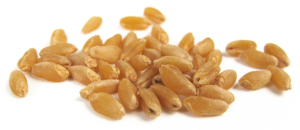By USW Market Analyst Michael Anderson
The 2022 U.S. wheat harvest is complete and this week, USDA estimated farmers have seeded 79% of the 2023 winter wheat crop. As winter approaches and the planted crop goes dormant, a supply and demand update across all U.S. wheat classes is warranted. The annual U.S. Wheat Crop Quality Report can be found here.
Last year’s hard red spring (HRS) wheat, durum, and white wheat crops were challenged by dry growing conditions. That is not the case for those classes this year, but hard red winter (HRW) was significantly impacted by adverse growing conditions. Below is an update across the wheat classes.
USDA estimates 2022/23 U.S. wheat production will total 44.9 MMT, 100,000 MT more than 2021/22 but 9% less than the 5-year average and the second lowest level in 20 years. According to USDA, the average yield for all U.S. wheat is forecast at 3.13 MT/HA, or 46.5 bu/acre, 5% higher than last year. The higher yields are due to a rebound in HRS, durum and white wheat yields. The yield for HRW is down significantly. The latest Small Grains Summary placed all wheat planted acres at 45.73 million acres, down 2% compared to 2021/22.
The latest USDA World Agricultural Supply and Demand Estimates (WASDE) report forecast U.S. wheat exports to total 21.09 MMT, down 3% from 2021/22 if realized. Through the week of October 13, USDA reported total wheat sales of 11.2 MMT, down 8% compared to the same time last year. The latest USDA Wheat Outlook suggested that tight supplies and historically high wheat prices have made U.S. wheat less competitive in the international market.
HRW
 According to USDA, the total HRW planted area fell slightly to 23.08 million acres. The area harvested fell more steeply at 15.24 million acres, 1.95 million acres less than in 2021/22. Overall U.S. HRW production is 14.5 MMT, 29 percent less than last year. Kansas, the largest HRW producing state, saw production drop 119,000 bushels compared to 2021/22. Oklahoma’s production dropped 40%, at 68,600 bushels, according to the Small Grains Report. Exports of HRW are forecast at 6 MMT, 30% less than in 2021/22. Year-to-date HRW sales of 3.1 MMT are 30% less than the pace last year. The top markets for HRW are Mexico, Japan, Nigeria, Brazil, and Colombia.
According to USDA, the total HRW planted area fell slightly to 23.08 million acres. The area harvested fell more steeply at 15.24 million acres, 1.95 million acres less than in 2021/22. Overall U.S. HRW production is 14.5 MMT, 29 percent less than last year. Kansas, the largest HRW producing state, saw production drop 119,000 bushels compared to 2021/22. Oklahoma’s production dropped 40%, at 68,600 bushels, according to the Small Grains Report. Exports of HRW are forecast at 6 MMT, 30% less than in 2021/22. Year-to-date HRW sales of 3.1 MMT are 30% less than the pace last year. The top markets for HRW are Mexico, Japan, Nigeria, Brazil, and Colombia.
HRS
 USDA estimates total HRS planted area in 2022 was 10.20 million acres, 390,000 fewer acres than 2021. The area harvest was up 5%, at 9.82 million acres. Heavy rain and cool temperatures early in the planting season slowed down spring wheat planting in parts of North Dakota and Minnesota. North Dakota HRS yield rebounded 49% from last year to 50 bushels per acre. USDA estimates total HRS production will rebound from last season and reach 12.1 MMT, 49% higher than in 2021. HRS exports are expected to reach 6.1 MMT, 400,000 MT higher than last season. Total HRS sales in 2022/23 were 2% higher than last year at 3.3 MMT. The top markets for HRS are the Philippines, Mexico, Japan, Taiwan, and South Korea.
USDA estimates total HRS planted area in 2022 was 10.20 million acres, 390,000 fewer acres than 2021. The area harvest was up 5%, at 9.82 million acres. Heavy rain and cool temperatures early in the planting season slowed down spring wheat planting in parts of North Dakota and Minnesota. North Dakota HRS yield rebounded 49% from last year to 50 bushels per acre. USDA estimates total HRS production will rebound from last season and reach 12.1 MMT, 49% higher than in 2021. HRS exports are expected to reach 6.1 MMT, 400,000 MT higher than last season. Total HRS sales in 2022/23 were 2% higher than last year at 3.3 MMT. The top markets for HRS are the Philippines, Mexico, Japan, Taiwan, and South Korea.
SRW

The total planted area for SRW is 6.57 million acres, 78,000 acres less than last season. The area harvested was 4.79 million acres, down slightly from last season. USDA estimates total SRW production in 2022 fell 600,000 MT to 9.2 MMT. However, exports are expected to increase year-over-year to 3.7 MMT. Total SRW sales in 2022/23 are 16% higher than the year prior at 2.0 MMT. The top markets for SRW were Mexico, Colombia, Ecuador, and China.
White
 White wheat planted area, which includes more than 99% soft white (SW), totaled 4.24 million acres in 2022. The area harvested is 4.02 million acres, nearly identical to 2021/22. Improved growing conditions in Washington and Oregon increased yields significantly. Washington yields are 61% higher than last year, while Oregon’s yields are 51% higher, according to the Small Grains Report. White wheat production is estimated at 7.4 MMT, 1.9 MMT more than in 2021/22. Exports are expected to reach 4.6 MMT. Total white wheat (soft and hard) sales in 2022/23 are 17% higher than last year at 2.5 MMT. The top markets for white wheat were the Philippines, Japan, China, and South Korea.
White wheat planted area, which includes more than 99% soft white (SW), totaled 4.24 million acres in 2022. The area harvested is 4.02 million acres, nearly identical to 2021/22. Improved growing conditions in Washington and Oregon increased yields significantly. Washington yields are 61% higher than last year, while Oregon’s yields are 51% higher, according to the Small Grains Report. White wheat production is estimated at 7.4 MMT, 1.9 MMT more than in 2021/22. Exports are expected to reach 4.6 MMT. Total white wheat (soft and hard) sales in 2022/23 are 17% higher than last year at 2.5 MMT. The top markets for white wheat were the Philippines, Japan, China, and South Korea.
Durum

Total U.S. durum planted area in 2022 was 1.63 million acres, 10,000 acres less than last season. The area harvested was 1.58 million acres, 4% higher than last year. Improved weather conditions increased total durum yields by 64% to 40.5 bu/acre. USDA expects total U.S. durum production will be 1.7 MMT, rebounding 70% from last year’s drought-stricken crop. Exports are expected to total 700,000 MT. Total durum sales in 2022/23 are up 14% compared to the year prior at 139,300 MT. The top markets for durum were Italy, Algeria, Guatemala, and Japan.Conclusion
In the latest Wheat Outlook published by the USDA ERS division, the authors note the challenge posed by U.S. wheat competitors. The smaller U.S. wheat crop, higher barge (and rail) rates, continued logistical challenges, and the strong U.S. dollar will cut into the competitiveness of U.S. wheat exports. Putin’s war with Ukraine compounds these challenges.
U.S. wheat farmers continue to produce sufficient supplies of high-quality wheat to meet both domestic and international needs for literally hundreds of unique baked goods. And the U.S. wheat export system remains open for business.
In marketing year 2022/23 to date, Mexico is the top U.S. wheat buyer, despite purchasing 4% less than at the same time last year. The Philippines is the second largest U.S. wheat buyer, 20% behind its pace last year. Japan is the third largest U.S. wheat customer but remains 8% behind its purchase pace of last year.
*All sales data is through the week of October 13, 2022.